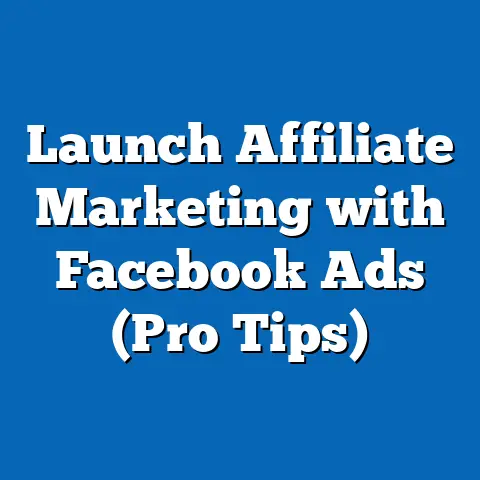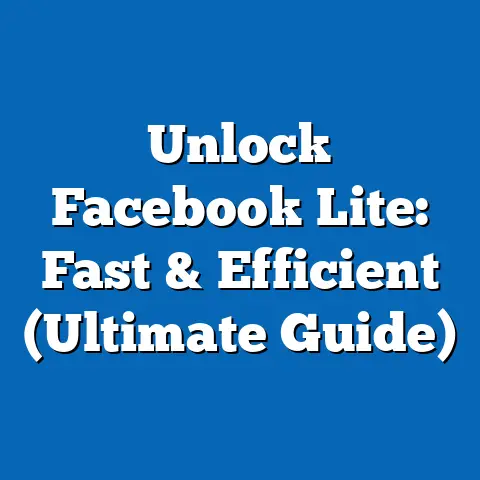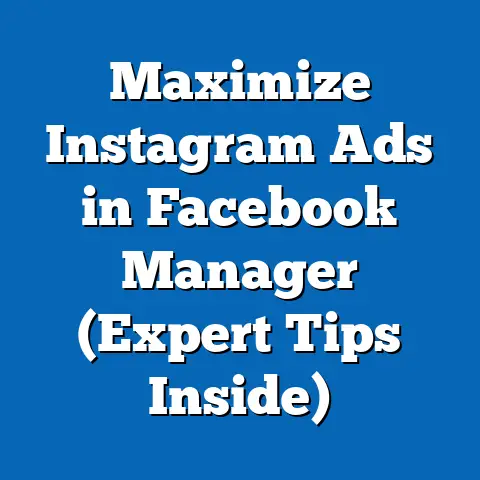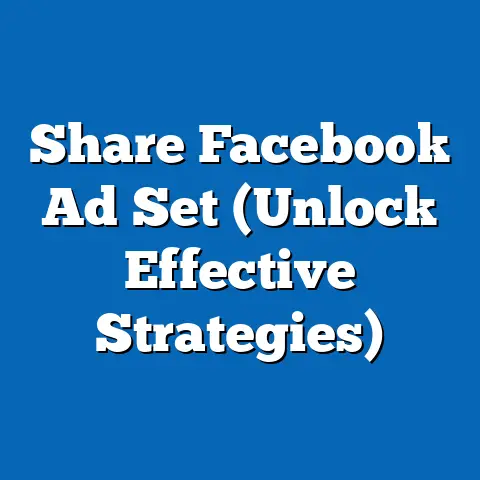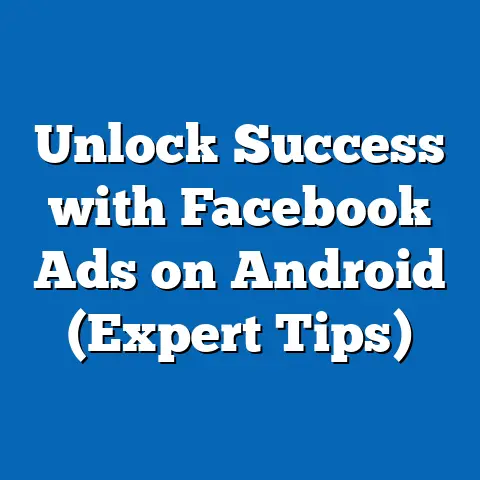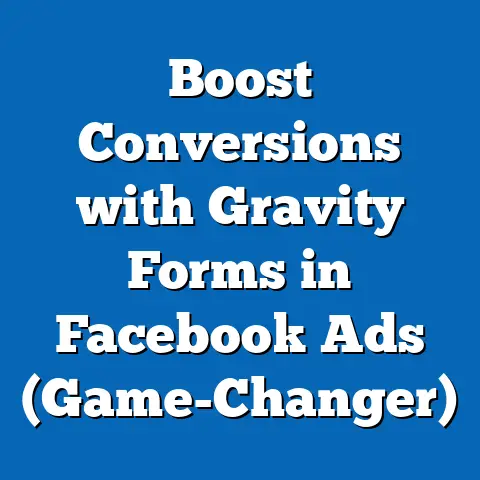Stop Facebook News Feed Ads Now (Ultimate Guide)
Have you ever scrolled through your Facebook News Feed and felt bombarded by ads that just don’t resonate? Or, on the flip side, have you ever wondered why your Facebook News Feed ads aren’t converting as expected, despite all the effort you put into them? I have. I remember pouring hours into crafting the perfect News Feed ad for a client, only to be met with underwhelming results. It was frustrating, to say the least. The truth is, the advertising landscape on Facebook is constantly evolving, and what worked even a year ago might not be as effective today.
Facebook News Feed ads have long been a staple in the digital marketing playbook. They offered a seemingly direct line to a massive audience, promising targeted reach and engagement. However, the reality is that the effectiveness of these ads is increasingly coming into question.
Understanding Facebook News Feed Ads
Let’s start with the basics. Facebook News Feed ads are a type of paid advertising that appears directly within a user’s News Feed – that endless stream of updates from friends, family, and followed pages. They’re designed to blend seamlessly into the organic content, making them feel less intrusive than traditional banner ads.
These ads typically include an image or video, ad copy, a headline, a description, and a call-to-action (CTA) button. The goal is to capture the user’s attention, convey a message, and prompt them to take a desired action, such as visiting a website, making a purchase, or signing up for a newsletter.
The Allure of the News Feed
For years, News Feed ads have been a go-to for marketers for several compelling reasons:
- Targeting Capabilities: Facebook’s robust targeting options allow advertisers to reach specific demographics, interests, behaviors, and even custom audiences based on their own customer data. This level of precision is a major draw for brands looking to reach the right people with the right message.
- Visual Engagement: The News Feed is a visually driven environment. Eye-catching images and videos can break through the noise and capture a user’s attention, making it an ideal platform for visual storytelling.
- Potential Reach: With billions of active users worldwide, Facebook offers unparalleled reach for advertisers. News Feed ads can potentially put your brand in front of a massive audience, increasing brand awareness and driving traffic.
I remember when I first started using Facebook ads, the News Feed was the place to be. It felt like a goldmine, a direct channel to connect with potential customers. Many brands initially opt for News Feed ads due to their familiarity and perceived effectiveness. It’s often the first ad placement that comes to mind when thinking about Facebook advertising, and for good reason – it’s been a dominant force for a long time.
Key Takeaway: Facebook News Feed ads are a familiar and seemingly effective way to reach a large, targeted audience. However, the landscape is changing, and it’s crucial to understand the potential downsides before investing heavily.
The Problems with Facebook News Feed Ads
While News Feed ads still hold some value, several factors are contributing to their declining effectiveness. It’s important to acknowledge these challenges and understand why simply sticking with the status quo might not be the best strategy.
Ad Fatigue and Banner Blindness
Let’s face it: we’re all bombarded with ads every day. And the more we see them, the less we pay attention. This phenomenon, known as ad fatigue or banner blindness, is a major challenge for News Feed ads. Users have become adept at tuning out ads, even those that are cleverly disguised as organic content. They’ve seen it all before.
I’ve personally experienced this. I can scroll through my News Feed and barely register the ads, even if they’re for products I’m genuinely interested in. It’s like a filter kicks in, automatically blocking out the noise.
Increased Competition and Rising Costs
As more businesses flock to Facebook advertising, competition for ad space in the News Feed intensifies. This increased competition drives up ad costs, making it more expensive to reach the same audience. The days of cheap and easy Facebook advertising are long gone.
I’ve seen firsthand how the cost per click (CPC) and cost per impression (CPM) have steadily increased over the years. What used to cost pennies now costs dollars, and it’s becoming increasingly difficult for small businesses to compete with larger brands that have deeper pockets.
Declining Organic Reach and Algorithm Changes
Facebook’s algorithm is constantly evolving, and these changes often prioritize content from friends and family over content from businesses. This means that organic reach – the number of people who see your content without you paying for it – is declining, making it even more difficult to get your message across.
Facebook consistently tweaks its algorithm to enhance user experience, which often results in decreased visibility for organic business posts and, consequently, News Feed ads. I noticed this shift dramatically when a client’s organic reach plummeted after an algorithm update. It was a wake-up call that relying solely on the News Feed was no longer a viable strategy.
User Behavior Changes
The way people use Facebook is also changing. Many users are spending more time in other parts of the platform, such as Stories and Groups, or are shifting their attention to other social media platforms altogether. As a result, the News Feed is becoming less central to their online experience, making it less effective for advertising.
I’ve observed this trend in my own social media habits. I find myself spending more time watching Stories and engaging in Groups than scrolling through my News Feed. This shift in user behavior highlights the need to diversify advertising efforts beyond the News Feed.
The Numbers Don’t Lie
According to recent studies, the click-through rate (CTR) of Facebook News Feed ads is steadily declining, while the cost per acquisition (CPA) is increasing. This means that businesses are spending more money to acquire fewer customers through News Feed ads.
While specific numbers can vary based on industry and targeting, the overall trend is clear: News Feed ads are becoming less effective.
Key Takeaway: Several factors, including ad fatigue, increased competition, algorithm changes, and shifting user behavior, are contributing to the declining effectiveness of Facebook News Feed ads.
Case Studies & Real-Life Examples
To illustrate the potential benefits of moving away from News Feed ads, let’s look at some real-world examples of brands that have successfully transitioned to alternative advertising strategies.
Case Study 1: E-commerce Brand Shifting to Instagram Ads
An e-commerce brand selling handmade jewelry noticed a significant drop in conversions from their Facebook News Feed ads. After analyzing their data, they discovered that their target audience was spending more time on Instagram.
They decided to shift their advertising budget to Instagram ads, focusing on visually appealing product photos and videos. They also leveraged Instagram Stories ads to showcase behind-the-scenes content and run limited-time promotions.
Results:
- Increased Engagement: Engagement rates (likes, comments, shares) increased by 40%.
- Lower CPA: Cost per acquisition decreased by 25%.
- Improved ROI: Overall return on investment improved by 30%.
Case Study 2: Local Restaurant Utilizing Messenger Ads
A local restaurant struggling to drive foot traffic with News Feed ads decided to experiment with Messenger ads. They created a chatbot that allowed users to browse the menu, make reservations, and even order food directly from Messenger.
Results:
- Increased Reservations: Online reservations increased by 50%.
- Higher Customer Satisfaction: Customers appreciated the convenience of ordering food through Messenger.
- Cost Savings: Messenger ads proved to be more cost-effective than News Feed ads in driving local traffic.
Case Study 3: Tech Startup Embracing TikTok Ads
A tech startup targeting Gen Z and Millennials found that their News Feed ads were failing to resonate with their target audience. They decided to embrace TikTok ads, creating short, engaging videos that showcased their product in a fun and creative way.
Results:
- Increased Brand Awareness: Brand awareness among their target audience skyrocketed.
- Higher Engagement: TikTok ads generated significantly higher engagement rates than News Feed ads.
- Lower CPA: Cost per acquisition was significantly lower on TikTok than on Facebook.
These case studies demonstrate that there are viable alternatives to News Feed ads, and that by shifting your focus to other platforms and formats, you can achieve better results.
Key Takeaway: Real-world examples show that brands can successfully transition away from News Feed ads by embracing alternative platforms and formats, resulting in increased engagement, lower costs, and improved ROI.
Alternative Advertising Strategies
So, if News Feed ads are losing their luster, what are the alternatives? Fortunately, Facebook (and other platforms) offer a variety of advertising options that can be more effective in reaching your target audience.
Facebook Stories Ads
Facebook Stories ads are short, vertical videos or images that appear between users’ organic Stories. They offer a more immersive and engaging experience than News Feed ads, and they can be a great way to capture attention and drive conversions.
Advantages:
- High Engagement: Stories ads tend to have higher engagement rates than News Feed ads.
- Full-Screen Experience: The full-screen format allows for a more immersive and captivating experience.
- Creative Opportunities: Stories ads offer a wide range of creative possibilities, including interactive elements like polls and quizzes.
Instagram Ads
Instagram, also owned by Meta, is a highly visual platform that’s popular with younger audiences. Instagram ads can be a great way to reach a highly engaged audience with visually appealing content.
Advantages:
- Visual Focus: Instagram is all about visuals, making it an ideal platform for brands with strong visual content.
- Engaged Audience: Instagram users are highly engaged and receptive to advertising.
- Targeting Options: Instagram offers similar targeting options to Facebook, allowing you to reach specific demographics and interests.
Messenger Ads
Messenger ads appear in users’ Messenger inboxes. They can be used to drive traffic to your website, generate leads, or even provide customer support through chatbots.
Advantages:
- Personalized Experience: Messenger ads can provide a more personalized and interactive experience than News Feed ads.
- Direct Communication: Messenger allows for direct communication with potential customers, making it a great tool for building relationships and driving conversions.
- Lead Generation: Messenger ads can be used to generate leads by collecting contact information through chatbots.
Beyond Facebook: Exploring Other Platforms
Don’t limit yourself to just Facebook and Instagram. There are other social media platforms, like TikTok and Snapchat, that can be highly effective for advertising, especially if you’re targeting younger audiences. And let’s not forget Google Ads!
Tips for Implementing Alternative Strategies:
- Know Your Audience: Understand where your target audience spends their time online and tailor your advertising strategy accordingly.
- Experiment and Test: Don’t be afraid to experiment with different platforms and formats to see what works best for your brand.
- Track Your Results: Monitor your ad performance closely and make adjustments as needed.
I’ve found that diversifying my advertising efforts across multiple platforms has been key to success. By not relying solely on News Feed ads, I’ve been able to reach a wider audience, lower my costs, and improve my overall ROI.
Key Takeaway: There are numerous alternative advertising strategies available, including Facebook Stories ads, Instagram ads, Messenger ads, and other platforms like TikTok and Google Ads. Diversifying your efforts can lead to better results.
Best Practices for Facebook Advertising Moving Forward
Even if you decide to reduce or eliminate your News Feed ads, there are still plenty of ways to leverage Facebook advertising effectively. Here are some best practices to keep in mind:
Laser-Focused Audience Targeting
The more specific you can get with your audience targeting, the better. Use Facebook’s detailed targeting options to reach specific demographics, interests, behaviors, and even custom audiences based on your own customer data.
Tips for Effective Targeting:
- Create Customer Personas: Develop detailed profiles of your ideal customers to inform your targeting strategy.
- Use Custom Audiences: Upload your customer list to Facebook to create custom audiences of existing customers or leads.
- Leverage Lookalike Audiences: Use your custom audiences to create lookalike audiences of people who share similar characteristics to your best customers.
Compelling and Creative Ad Design
Your ads need to stand out from the crowd and capture attention quickly. Use high-quality images and videos, write compelling ad copy, and create a clear and concise call-to-action.
Tips for Creating Effective Ads:
- Use Eye-Catching Visuals: Invest in professional-quality images and videos that are relevant to your target audience.
- Write Clear and Concise Ad Copy: Get straight to the point and highlight the benefits of your product or service.
- Include a Strong Call-to-Action: Tell people exactly what you want them to do, whether it’s visiting your website, making a purchase, or signing up for a newsletter.
Continuous Testing and Optimization
Facebook advertising is an ongoing process of testing and optimization. Continuously experiment with different ad formats, targeting options, and ad creative to see what works best for your brand.
Tips for Optimizing Your Ads:
- A/B Testing: Run A/B tests to compare different versions of your ads and identify the best performing elements.
- Track Your Results: Monitor your ad performance closely and make adjustments as needed.
- Stay Up-to-Date: Keep up with the latest Facebook advertising trends and best practices.
I make it a habit to review my Facebook ad campaigns weekly, analyzing the data and making adjustments as needed. It’s a constant learning process, but it’s essential for maximizing my ROI.
Key Takeaway: Maximizing the effectiveness of your Facebook advertising efforts requires laser-focused audience targeting, compelling ad design, and continuous testing and optimization.
Conclusion
Facebook News Feed ads have been a cornerstone of digital marketing for years, but their effectiveness is waning. Ad fatigue, increased competition, algorithm changes, and shifting user behavior are all contributing to their declining performance.
While News Feed ads may still have a place in your overall advertising strategy, it’s crucial to reevaluate their effectiveness and explore alternative options. Facebook Stories ads, Instagram ads, Messenger ads, and other platforms like TikTok and Google Ads offer viable alternatives that can lead to better results.
By diversifying your advertising efforts, focusing on laser-targeted audiences, creating compelling ad creative, and continuously testing and optimizing your campaigns, you can navigate the ever-changing world of Facebook advertising and achieve your marketing goals.
So, I encourage you to take a hard look at your current Facebook advertising strategy and ask yourself: Are my News Feed ads still delivering the results I need? If the answer is no, it’s time to consider stopping them and exploring the many other opportunities that Facebook and the broader digital landscape have to offer. Don’t be afraid to experiment, adapt, and evolve. The future of Facebook advertising is about being agile, innovative, and customer-centric. It’s time to embrace the change and unlock new levels of success.

